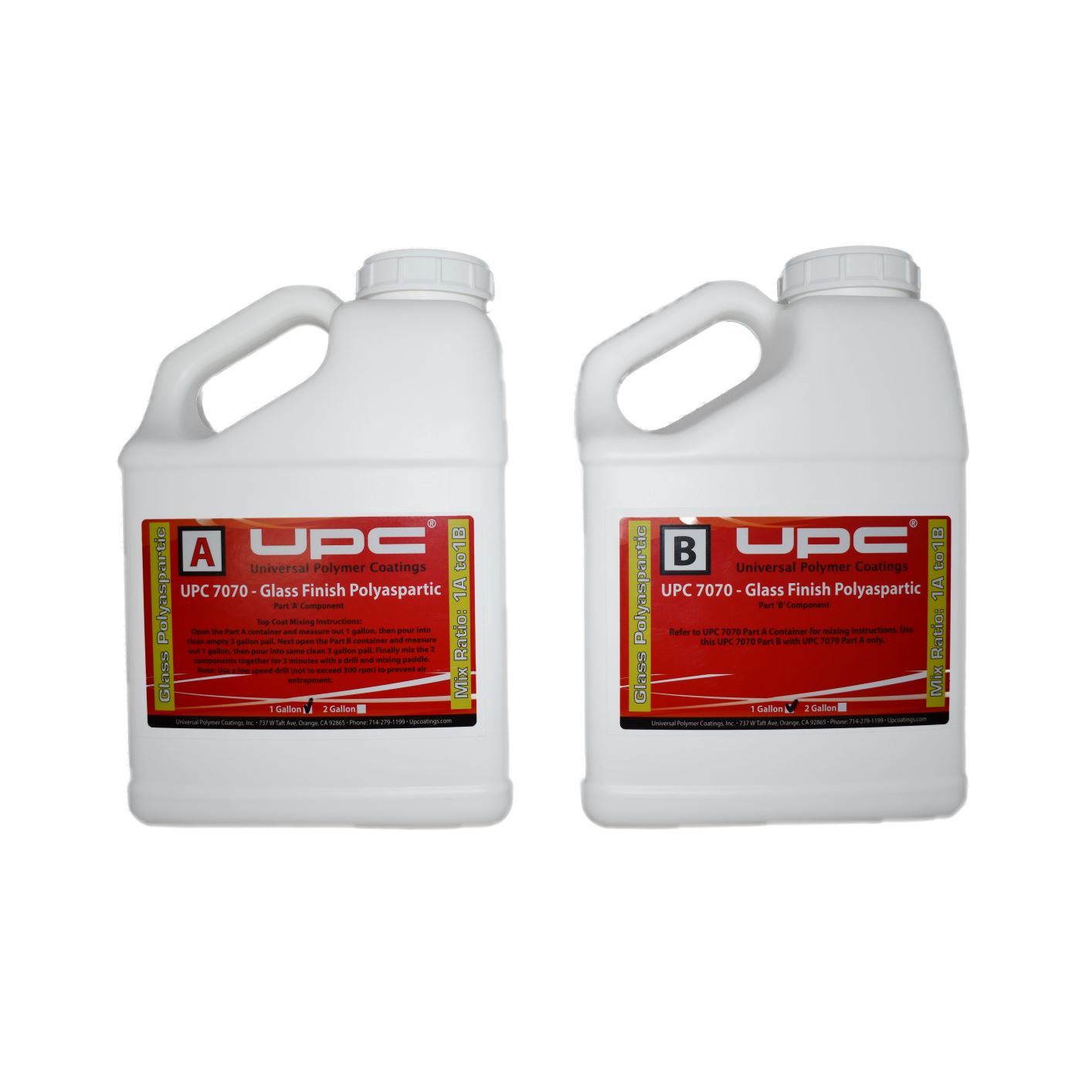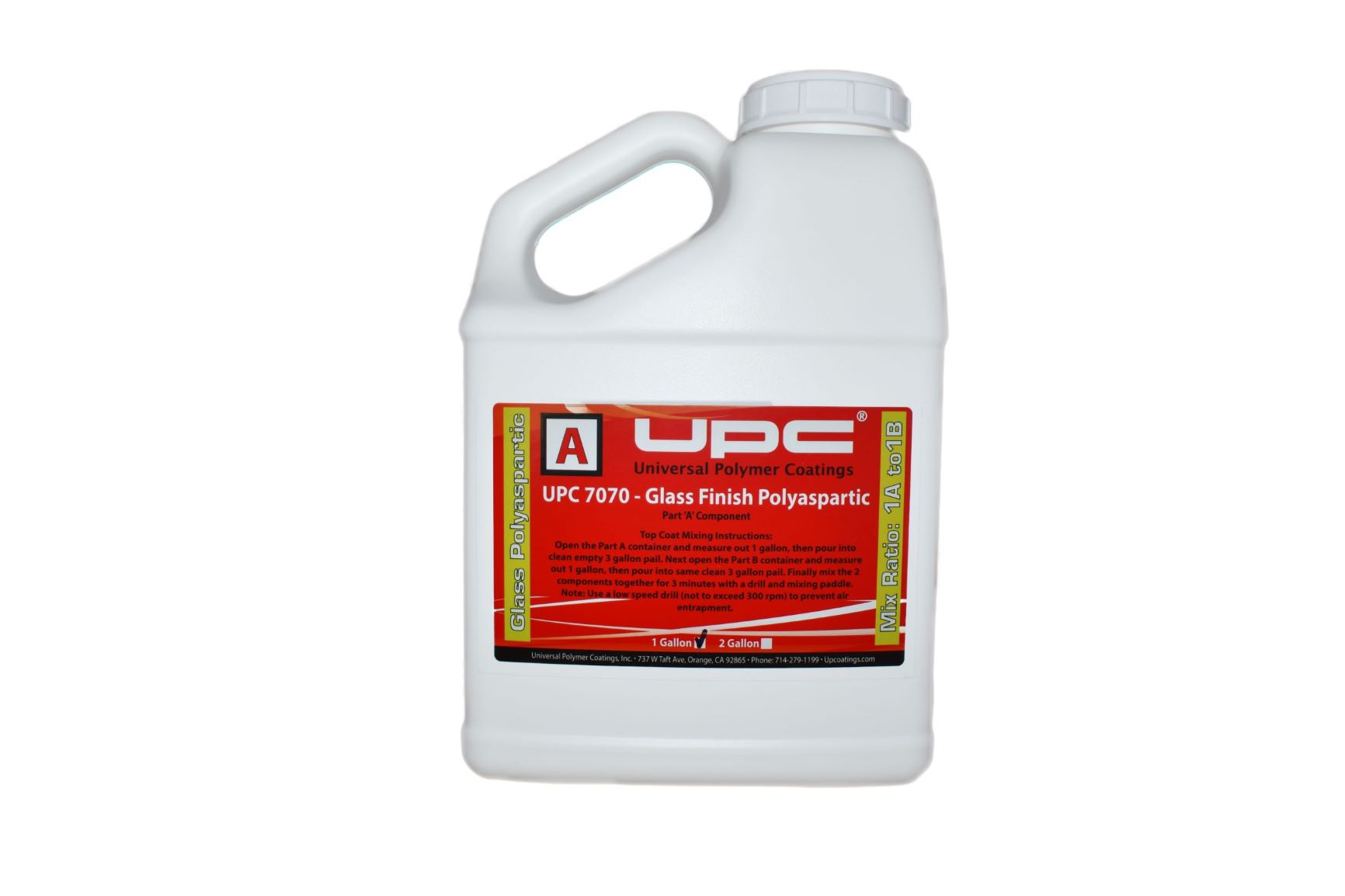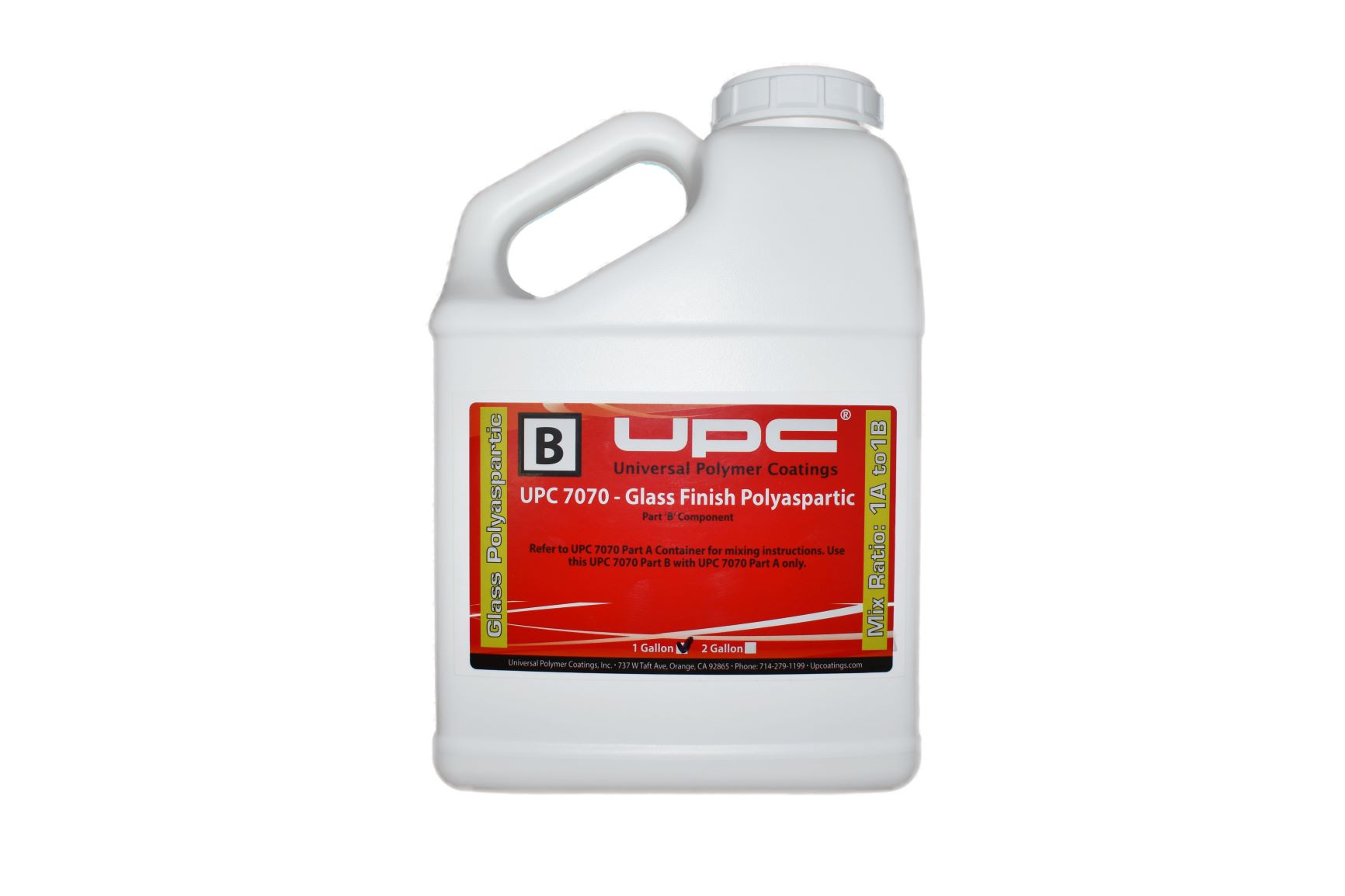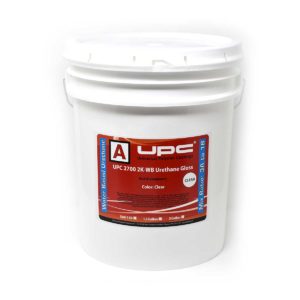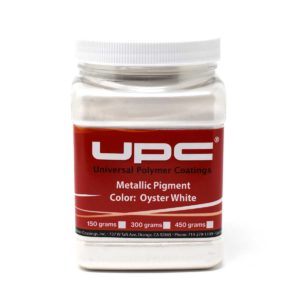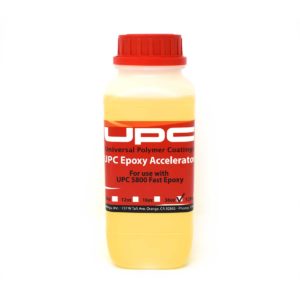UPC 7070 Glass Finish Polyaspartic
UPC 7070 Glass Finish Polyaspartic is a two component, polyaspartic urethane designed to be achieve high gloss and a glass mirror like finish while being low in odor. UPC 7070 is a non-yellowing system that is the ideal top coat for high-end floors that require a glassy finish. UPC 7070 Glass Finish Polyaspartic design features achieve great chemical and wear resistance.. UPC 7070 features good abrasion resistance and a cure time of six to eight hours.
Download TDS:
Advantages
- Abrasion resistant
- Non-yellowing
- Chemically resistant
- Low VOC
- Easy mixing Ratio (1:1)
- Flexible
- Extreme Gloss Finish
- Great for Showrooms
Applications
- Table Tops
- Garage Floors
- Aisle ways
- Clean rooms
- Auto showrooms
- Schools
- Laboratories
- Basements
- Kennels
- Veterinary facilities
- Airports
- Health Care facilities
Colors
UPC 7070 Glass Finish Polyaspartic is available as a clear base. A variety of pigment packs can be added at an additional charge. Please contact UPC Sales Represenative for available colors.
Packaging
UPC 7070 is available in three different kit sizes:
| Part A | Part B | |
| 2 Gallon Kit | 1 gal. | 1 gal. |
| 3 Gallon Kit | 1.5 gal. | 1.5 gal. |
| 10 Gallon Kit | 5 gal. | 5 gal. |
Concrete Preparation
Before coating is applied, concrete must be:
- Dry – No wet areas
- Clean – Contaminants removed
- Profiled – Surface etched
- Sound – All cracks and spalled areas repaired
Mechanical preparation is the preferred method of preparing concrete for coating application. Shot-blasting, diamond grinding, scarifying and scabbling are all acceptable methods.
Physical Properties
| PROPERTY | VALUE |
| Appearance | Clear Liquid |
| Total Solids (% by Weight) | 92 |
| Total Solids (% by Volume) | 92 |
| Surface Tension, Dynes/cm | 40 |
| Viscosity (Brookfield LVF), cps @ 25° C | 600 |
| Density (lbs/gallon) | 8.44 |
| Specific Gravity | 1.014 |
| Flash Point (C Pensky-Martens closed cup) | <70 |
| Freeze/Thaw Stability | N/A |
| Thermal Stability (28 days @ 52° C) | No Effect |
| Mechanical Stability | Good |
| VOC (g/l) | > 50 g. per liter |
| VOC (by Weight) | > 50 g. per liter |
| Tg (C) | 66 |
| Tensile Strength, psi | 7000 |
| Elongation | 8% |
Patching
Voids, cracks and imperfections will be seen in finished coating if the concrete is not patched correctly. Patch concrete with UPC Perfect Patch. After the patching material is cured, diamond grind patch. If a non-UPC patching material is used, contact a UPC technical representative for a compatible and approved alternative.
Testing
All surfaces are not the same. It is recommended that a sample area be done before the start of the project. The test should be done on-site, using the proposed method by the assigned applicator to insure proper adhesion and color. A sample area should also be done on any existing coatings to determine if any contaminants exist or if delaminating will occur.
Clean-up
UPC 7070 Glass Finish Polyaspartic, while in an un-reacted state, may be cleaned up with water and degreaser. Isopropyl alcohol or acetone may be needed once the resin begins hardening. Lastly, a strong solvent like methylene chloride may be required if resin is nearly set up.
CHEMICAL RESISTANCE: 7-DAY SUBMERSION
| PROPERTY | VALUE |
| Brake Fluid | No Effect |
| Transmission Fluid | Slight Discoloration |
| Coolant | No Effect |
| Power Steering Fluid | Slight Discoloration |
| Battery Acid | Slight effect |
| MEK | <200 Double Rubs |
| Acetone | <200 Double Rubs |
| Formula 409 | <200 Double Rubs |
Product Data
| Volumetric Ratio: | 1 to 1 |
| Coverage: | 80-100 SF/Gal |
| Application temperature: | 30-90°F |
| Thinning: | Not required |
| Pot life: | 15-20 minutes |
| Working time on floor: | 15-20 minutes |
| Cure time: | 6-8 hours |
| Critical recoat time: | 18 hours |
| Shelf life: | 12 months |
| USDA Food & Beverage: | Meets requirements |
Application Instructions
- Always apply in descending temperatures. Concrete is porous and traps air. In ascending temperatures (generally mornings) the air expands and can cause out gassing in the coating. It is safer to apply coatings in the late afternoon, especially for exterior applications.
- Optimum ambient temperature should be between 60-90°F during application.
- Mix UPC 7070 Glass Finish Polyaspartic using mixing instructions found on this TDS.
- Apply approximately 80-100 SF per gallon (80 SF per gallon for 20 mil and 100 SF for 16 mil) by immediately pouring out on surface in a ribbon, while walking and pouring at the same time until bucket is empty.
- Using a squeegee on a pole, pull UPC 7070 Glass Finish over substrate while uniformly covering surface.
- Using a 3/8” non-shedding phenolic (plastic) core paint roller, roll coating forwards and backwards.
- Preferred installation would be to use a hand trowel to avoid getting roller fibers in film.
- For jobs that require extreme levels of gloss, a second coat of UPC 7070 may be necessary. 80-100 SF per Gallon of UPC 7070 Glass Finish Polyaspartic is recommended.
Mixing
The ratio of UPC 7070 Glass Finish Polyaspartic is 1 to 1. That is, 1 part A (resin) to 1 part B (hardener). Generally, 2 mixed gallon of UPC 7070 Glass Finish is ideal for application. Mix the following with a drill and mixing paddle. Note: If using a drill mixer, use a low speed to prevent air entrapment.
-
- Pour out 1 gallon of Part A into a clean bucket.
- Add 1 gallon of Part B and mix for 2 minutes.Product Limitations Ground level concrete slabs emit invisible moisture vapor. The allowable moisture emissions for concrete are 3 lbs. / 1,000 SF over a 24-hour period based on a Calcium Chloride test. Also, a Relative Humidity (RH) test can be performed to test for moisture vapor. RH testing results should be below 85% per ASTM F2170. If moisture is above this level, then blistering and de-lamination of coating may occur. A calcium chloride or Relative Humidity test should be performed to determine concrete moisture levels. If moisture levels exceed the 85% for RH test or 3 lbs. for Calcium Chloride, then a concrete moisture vapor control system should be used first before applying coating system. Recommended system for cases of moisture above acceptable levels is UPC 5200. UPC 5200 Moisture Lock passes F3010 spec based on E96 testing results. Please contact UPC representative for additional details.Coating systems are susceptible to cracking if the concrete moves or separates below the coating. Hence, joint and crack treatment should be reviewed prior to coating application. As a general rule, control joints (saw cuts) and random cracks should be saw-cut or chased first then filled with UPC 777 Perfect Patch. Construction/cold joints (two slabs which meet and hence move) should be treated. After the coating has been applied and cured, saw cut through the coating over construction joints and apply an elastomeric caulking.
Warranty:
Universal Polymer Coatings products are warranted for one year after date of application. Please refer to the UPC Limited Material warranty for additional clarification. Safety Consult UPC 7070 Glass Finish Polyaspartic Safety Data Sheet. Avoid UPC 7070 contact with skin. Some individuals may be allergic to polyaspartic resin and isocyanate. Protective gloves, clothing, and mask are recommended.

